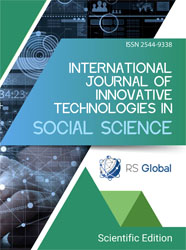CHANGING THE TRAJECTORY OF GROWTH: THE APPLICATION OF VOSORITIDE IN CHILDREN WITH ACHONDROPLASIA. A CHANCE FOR IMPROVED QUALITY OF LIFE?
Abstract
Achondroplasia (ACH) is the most common skeletal dysplasia and the leading genetic cause of dwarfism. It is characterized by disproportionate short stature and lifelong medical complications, with an estimated incidence of 1 in 25,000–30,000 live births. The condition results from a mutation in the fibroblast growth factor receptor 3 (FGFR3) gene, causing receptor overactivation and impaired bone growth at the growth plates. This review provides an overview of achondroplasia, including its pathophysiology, clinical features, diagnostic methods, and novel therapeutic options, with emphasis on vosoritide. Historically, management has focused on symptomatic treatment and surgical interventions to address complications such as foramen magnum stenosis, hydrocephalus, and postural deformities. Vosoritide (Voxzogo) marks a breakthrough as the first disease-modifying therapy targeting the underlying pathophysiology. It is a C-type natriuretic peptide (CNP) analog that inhibits the overactive MAPK pathway, thereby promoting chondrocyte proliferation and differentiation in growth plates and enabling endochondral bone growth. Phase 3 clinical trials demonstrated that vosoritide significantly increases annual growth velocity (by approximately 1.57 cm) and improves body proportions, with a favorable safety profile. Reported adverse effects were generally mild, including transient hypotension and injection site reactions. Despite these advances, vosoritide therapy does not eliminate the need for coordinated multidisciplinary care and psychological support. Patients require ongoing monitoring and management of associated complications, including neurological, orthopedic, respiratory, and developmental issues. In summary, achondroplasia remains the most frequent genetic form of dwarfism, traditionally managed through supportive care and surgery. The introduction of vosoritide represents a paradigm shift, offering the first targeted therapy that directly modifies disease progression and opens new perspectives for improving patients’ quality of life.
References
Pauli, R. M. (2019). Achondroplasia: A comprehensive clinical review. Orphanet Journal of Rare Diseases, 14(1), 1. https://doi.org/10.1186/s13023-018-0972-6
Ornitz, D. M., & Legeai-Mallet, L. (2017). Achondroplasia: Development, pathogenesis, and therapy. Developmental Dynamics, 246(4), 291–309. https://doi.org/10.1002/dvdy.24479
Wright, M. J., & Irving, M. D. (2012). Clinical management of achondroplasia. Archives of Disease in Childhood, 97(2), 129–134. https://doi.org/10.1136/adc.2010.189092
Tofts, L., Ireland, P., Tate, T., Raj, S., Carroll, T., Munns, C. F., Knipe, S., Langdon, K., McGregor, L., McKenzie, F., Zankl, A., & Savarirayan, R. (2024). Consensus guidelines for the use of vosoritide in children with achondroplasia in Australia. Children, 11(7), 789. https://doi.org/10.3390/children11070789
Wrobel, W., & Ben-Skowronek, I. (2024). Assessment of the efficacy of vosoritide therapy in children with achondroplasia in clinical trials. Translational Pediatrics, 13(9), 1515–1516. https://doi.org/10.21037/tp-24-249
Kubota, T., Adachi, M., Kitaoka, T., Hasegawa, K., Ohata, Y., Fujiwara, M., Michigami, T., Mochizuki, H., & Ozono, K. (2020). Clinical practice guidelines for achondroplasia. Clinical Pediatric Endocrinology, 29(1), 25–42. https://doi.org/10.1297/cpe.29.25
Okenfuss, E., Moghaddam, B., & Avins, A. L. (2020). Natural history of achondroplasia: A retrospective review of longitudinal clinical data. American Journal of Medical Genetics Part A, 182(11), 2540–2551. https://doi.org/10.1002/ajmg.a.61825
Leiva-Gea, A., Martos Lirio, M. F., Barreda Bonis, A. C., Marín del Barrio, S., Heath, K. E., Marín Reina, P., Guillén-Navarro, E., Santos Simarro, F., Riaño-Galán, I., Yeste Fernández, D., & Leiva-Gea, I. (2022). Achondroplasia: An update on diagnosis, follow-up, and treatment. Anales de Pediatría, 97(6), 423–423.e10. https://doi.org/10.1016/j.anpedi.2022.10.004
Merchant, N., Hoover-Fong, J., & Carroll, R. S. (2025). Approach to the patient with achondroplasia: New considerations for diagnosis, management, and treatment. Journal of Clinical Endocrinology & Metabolism, 110(7), e2309–e2316. https://doi.org/10.1210/clinem/dgaf017
Semler, O., Cormier-Daire, V., Lausch, E., Bober, M. B., Carroll, R., Sousa, S. B., Deyle, D., Faden, M., Hartmann, G., Huser, A. J., Legare, J. M., Mohnike, K., Rohrer, T. R., Rutsch, F., Smith, P., Travessa, A. M., Verardo, A., White, K. K., Wilcox, W. R., & Hoover-Fong, J. (2024). Vosoritide therapy in children with achondroplasia: Early experience and practical considerations for clinical practice. Advances in Therapy, 41(1), 198–214. https://doi.org/10.1007/s12325-023-02705-9
Akinnusotu, O., Isaacs, A. M., Stone, M., & Bonfield, C. M. (2023). Neurosurgical management of cervicomedullary compression, spinal stenosis, and hydrocephalus in pediatric achondroplasia: A systematic review. Journal of Neurosurgery: Pediatrics, 32(5), 597–606. https://doi.org/10.3171/2023.6.PEDS23162
Feller, C., & Senthilvel, E. (2024). Sleep-disordered breathing in an infant with achondroplasia and foramen magnum stenosis. Cureus, 16(3), e56291. https://doi.org/10.7759/cureus.56291
Chen, H., Zhang, R., Jin, M., Yang, J., Chen, L., & Xie, Y. (2024). Advances in the mechanism and therapies of achondroplasia. Genes & Diseases, 12(4), 101436. https://doi.org/10.1016/j.gendis.2024.101436
Bucerzan, S., Alkhzouz, C., Crisan, M., Miclea, D., Asavoaie, C., Ilies, R., & Grigorescu-Sido, P. (2021). Diagnostic, treatment and outcome possibilities in achondroplasia. Medical Pharmacy Reports, 94(Suppl 1), S22–S24. https://doi.org/10.15386/mpr-2222
Mindler, G. T., Stauffer, A., Chiari, C., Mladenov, K., & Horn, J. (2024). Achondroplasia: Current concept of orthopaedic management. Journal of Children’s Orthopaedics, 18(5), 461–476. https://doi.org/10.1007/s11832-024-00728-7
Views:
89
Downloads:
49
Copyright (c) 2025 Marta Turek, Julia Szlążek, Michalina Zagalska, Adam Jan Ząbek, Kamil Kerknawi, Paulina Mikulec, Marceli Mesyasz, Tomasz Tamborski, Jakub Paweł Kuźniar, Emilia Gabriela Chrzanowska

This work is licensed under a Creative Commons Attribution 4.0 International License.
All articles are published in open-access and licensed under a Creative Commons Attribution 4.0 International License (CC BY 4.0). Hence, authors retain copyright to the content of the articles.
CC BY 4.0 License allows content to be copied, adapted, displayed, distributed, re-published or otherwise re-used for any purpose including for adaptation and commercial use provided the content is attributed.











